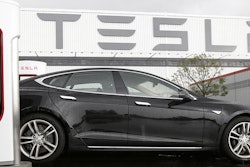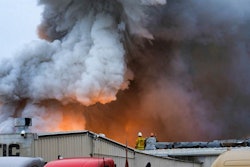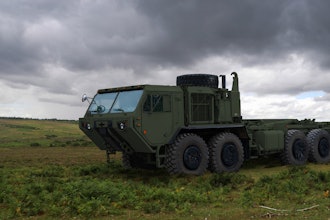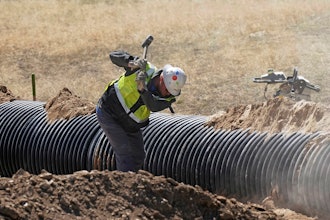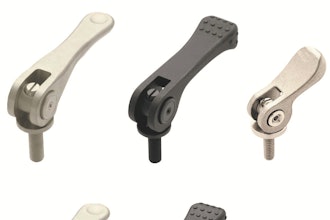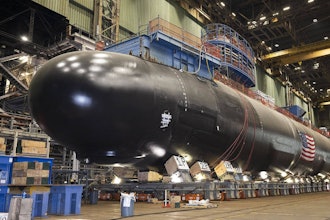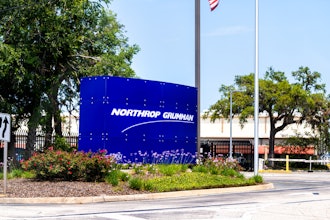
 Mark Humphlett, Senior Director of Industry and Product Marketing, Infor
Mark Humphlett, Senior Director of Industry and Product Marketing, Infor Smart sensors are the heroes in manufacturing’s rekindled evolution. Thanks to these remarkably small, highly flexible, highly-versatile devices, manufacturers can now capture, communicate, and harness unprecedented levels of data and business intelligence. It’s a whole new world in manufacturing and we owe it to the miracle cure-all sensor devices that can be as small as a pencil eraser and cost less than a dollar each. It almost sounds too good to be true.
Maybe it is too big of a claim to be truly realistic. Can the use of sensors suddenly increase margins, improve customer satisfaction, stock the warehouse and keep shop floor assets from failing? Yes. And No. Although it is tempting to assume sensors can solve all of the vast issues manufacturers face, a degree of caution, a dose of reality serum, and some old-fashioned strategic thinking and hard work must go into the process. There is no short cut. No easy button.
Understanding the Miracle-Mindset
We often look for the miracle cure or the silver bullet that will solve all of our “ailments” with one simple step. Some call it optimism. Others would say it is blind naivety that allows so many of us to fall prey to “too good to be true” deals. Even the highly educated technology-enthusiast can be blinded by vague promises and “next revolution” double-speak.
It’s comforting to think adding some sensors to the shop floor will suddenly lead to greater profitably, happier customers, wider market-share and more productive assets that never fail. This seems to be the overly optimistic assumption of many manufacturers as they fumble with concepts around sensor technologies and Internet of things strategies. The low cost availability, ever-expanding capabilities, shrinking size, and increasing material flexibility can truly be mind-numbing and lead the manufacturer to “hope for the best” as they jump into the deep end of the technology with both feet, big budgets, high hopes and no life preservers.
While “There’s an app for that” was the mating call of IT vendors seeking users in the last decade, now the new resounding cry ringing through the IT wilderness is “Slap a sensor on that!” Far too often manufacturers are falling for the quick-fix mentality. They think they can add sensors now — then decide how to use the data later. A hastily crafted plan for storing the data may be an after-thought too. Such haphazard thinking seldom ends well, yet many of us have fallen into this “boldly following” syndrome where we accept prescriptive advice from experts without truly understanding the issues. Data=Answers, we want to believe.
Defining the Technology
Sensors are used to monitor three basic conditions:
- Geo location- GPS sensors are used to track location of assets, vehicles, inventory or even people. The data can be used to track where a shipping container is in its journey to the plant or where a service fleet vehicle is as it makes calls to customers.
- Environmental status- Sensors can capture a vast range of environment conditions, such as speed, vibration, temperature, volume, weight, viscosity, humidity and velocity. This is critical for many applications, including temperature in F&B, and performance issues around in-plant assets. The sensors must convey this information to a receiving data base which aggregates the data, monitoring for anomalies which require action.
- Identification- Sensors can be attached to packages, pallets, crates, assets, parts, components and vehicles so that the objects can be easily identified. Additional information about the item can be linked to its identity, such as lot number, quantity, date, dimensions, etc. Radio frequency identification (RFID) tags can be placed in or on items which are read when passing through a reader's electronic field. Barcodes can also be used as a simple, inexpensive option.
The data collected from sensors must be collected, stored, and monitored. These are the challenging aspects that can cause a manufacturer to stumble and fall, tangled in the many variables which can seem to multiply exponentially once deployment starts.
Beyond the Smoke and Mirrors
Adopting disruptive technology is never simple and never comes with a guarantee of results. Smart manufacturing is far more than adding some sensors to the shop floor. Collecting data, purely for data’s sake, is an exercise in logistics and a chance to show off to peers who has the biggest data storage facility. That data means nothing if it is not consumed and applied to solving problems in a meaningful way.
Data collected from sensors must have:
- Context - The data point needs to have other related contextual relationships recorded, such as time, place, location, or machine. In order to use the data to spot anomalies, you need to know something about the contributing factors. The data was not created in a vacuum, nor can it be analyzed in a vacuum. Time stamps, GPS coordinates, weather, and relevant machine/asset/vehicle are the most common variables which provide valuable context for the manufacturer.
- Relevance - The data point must be significant to end results or some reasons why it is being monitored, such as some aspect/condition which can changed, influenced or controlled. Relevance is subjective, of course, making this one of the most challenging considerations. Some critical filters, such as impact to the bottom line or risk to customer satisfaction, must be applied in order to help set priorities on data collection and significance.
- Communication - Relaying critical exceptions, exchanging data, and machine-to-machine communication are all critical aspects of a sound Internet of Things strategy or sensor initiative. The data must be conveyed to a “listener” that can store, organize and allow access to the data. Intranets or the internet are often used. Security must be considered too.
- Analysis - The data collected from sensors needs to be aggregated and analyzed. In the raw, unstructured form, it is rather useless. Analysis needs to be able to identify and capture the anomalies that fall outside of the prescribed borders. These are the data points which indicate “something” isn’t as expected or needs attention.
- Action - Here is where the sensor project obtains its ROI. Certain data points or combination of data can trigger predetermined actions. Automating responses to sensor data saves times and resources. It also ensures that the proper response is initiated, without relying on human intervention.
Wrapping it Up
Manufacturers looking for quick fixes to their issues need to take a step back and re-examine the many factors that go into a successful smart manufacturing and Internet of Things strategy. Sensors are only one component. While industry journals and newsletters may promise innovation breakthroughs cascading from sensor technology, the tech savvy manufacturer must look past the hype and form a realistic plan of action for embracing sensor technology — while still keeping one foot firmly rooted in the “here and now” dimension.
Mark Humphlett is a Sr. Director of Industry & Product Marketing at Infor.





